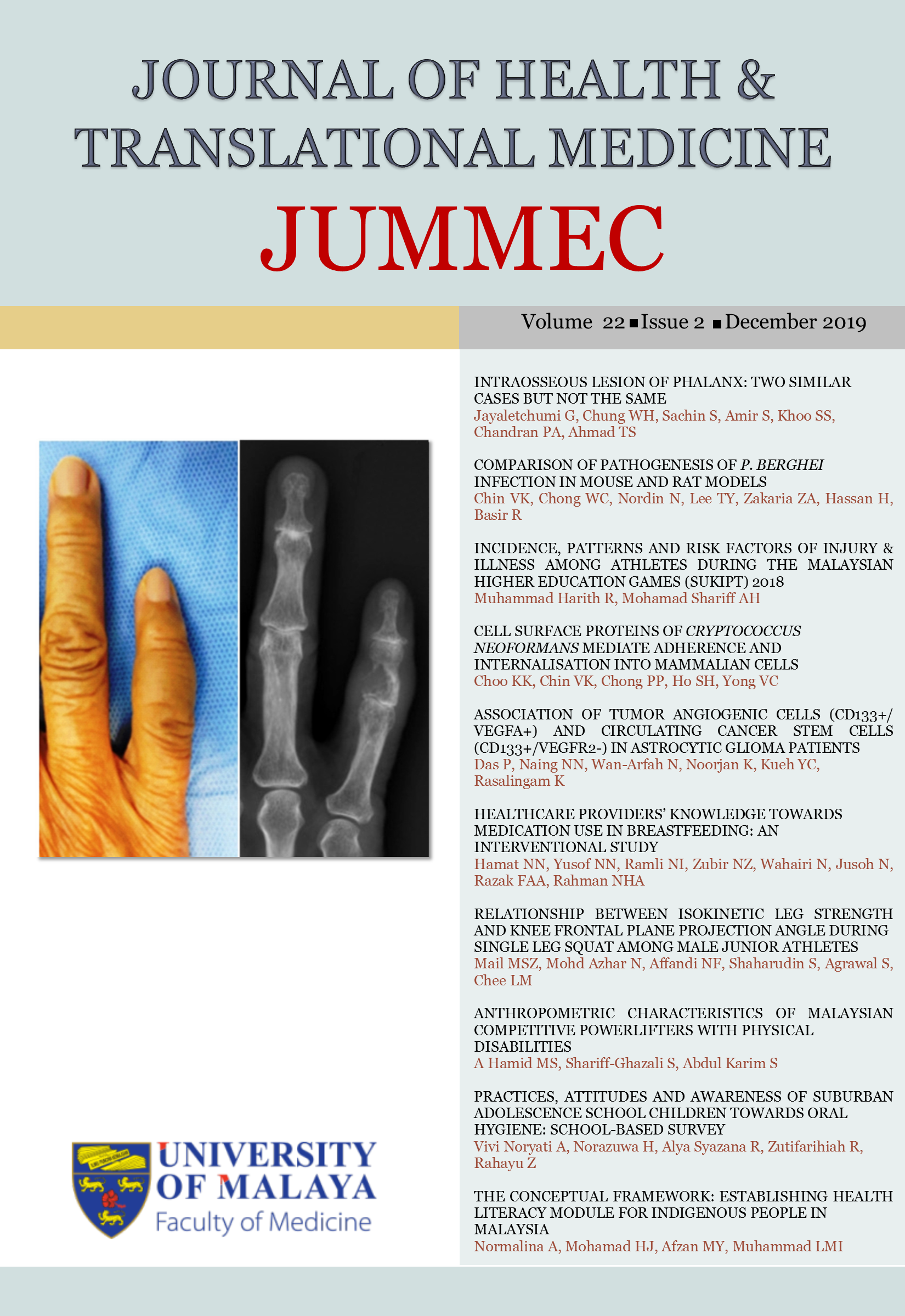RELATIONSHIP BETWEEN ISOKINETIC LEG STRENGTH AND KNEE FRONTAL PLANE PROJECTION ANGLE DURING SINGLE LEG SQUAT AMONG MALE JUNIOR ATHLETES
Received 2019-06-20; Accepted 2019-07-18; Published 2019-09-20
DOI:
https://doi.org/10.22452/jummec.vol22no2.7Keywords:
biomechanicsAbstract
Background: Those with increased dynamic knee valgus are vulnerable to increased risk of non-contact knee
injuries. However, studies on the top down kinetic chain of lower limb mechanics during dynamic motions
such as single leg squat (SLS) among trained males were scarce.
Objective: The objective of the study was to evaluate the relationship between isokinetic hip and knee strength
and frontal plane projection angle (FPPA) of the knee joint during SLS.
Methods: Thirty-two male junior athletes (twelve cyclists, ten runners and ten squash players) were screened
for excessive dynamic knee valgus (DKV) prior to participation. Only those within the normal value of DKV were
included. Their hip and knee isokinetic strength in sagittal plane were evaluated at 60º/s of angular velocity
for both legs using dynamometer. Two dimensional knee FPPA was evaluated during SLS at 60º of knee flexion.
Pearson correlation was evaluated between knee FPPA during SLS and isokinetic leg strength.
Results: Correlations between knee FPPA and hip and knee isokinetic strength were not statistically significant
except between knee flexion peak torque/body weight (r = -0.35, p = 0.05) and hamstring to quadriceps ratio
(r = -0.39, p = 0.03) of non-dominant leg.
Conclusions: Isokinetic hip and knee strength and knee FPPA during SLS was correlated only for non-dominant
leg during SLS among male junior athletes. DKV during SLS may be reduced through strengthening the muscles
around hip and knee joints.
Downloads
Downloads
Published
Issue
Section
License
All authors agree that the article, if editorially accepted for publication, shall be licensed under the Creative Commons Attribution License 4.0 to allow others to freely access, copy and use research provided the author is correctly attributed, unless otherwise stated. All articles are available online without charge or other barriers to access. However, anyone wishing to reproduce large quantities of an article (250+) should inform the publisher. Any opinion expressed in the articles are those of the authors and do not reflect that of the University of Malaya, 50603 Kuala Lumpur, Malaysia.


